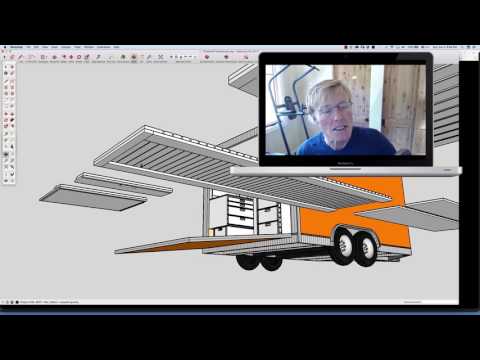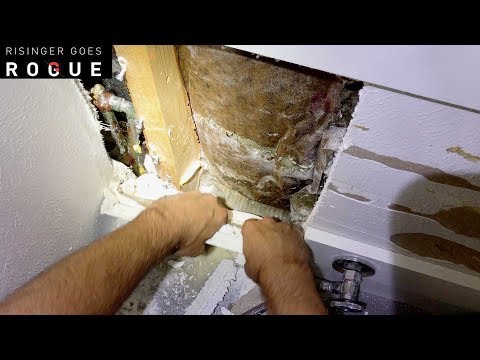The transcript of this safety training video about gas and other flammable liquids follows here.
1/ Store flammable liquids in safety cans
Anytime you're using diesel, gasoline, or mixed gas, you must store it in an approved safety can. A safety can is a metal can with a spring-actuated lid.
In addition to that, it must have a flame arrestor. Right here, a lot of guys get confused and think this is for filtering out debris so it doesn't get in the gas tank of the equipment that you're using. This is actually a flame arrestor. These safety cans, if it doesn't have a flame arrestor, aren't safe.
So make sure that you're checking inside the cans. If it's not there, let your superintendent know, and we can order these. They're about $6 as opposed to throwing these out, which is $60. So make sure they're in there. Sometimes, they fall out. So just be aware of that.
2/ Refuel when the engine is cool
When you're refueling equipment, don't wait for the machine or the generator, whatever that you're using, to run out of fuel when you need the fuel. Plan your fill-ups in the morning, after the break, or after lunch because you wanna refill when the engine's cool.
If you spill fuel on a hot engine, the likelihood of it going up in flames is much higher. One way to prevent spills is to use a funnel. This can right here is a Type Two; it has a funnel affixed to the actual can itself. This Type One can have yellow funnels; it's never there when you need it. It's in the back of the pick-up truck, it's in the job trailer, or it's nowhere in sight.
So when you fill this, make sure you're using a funnel, but ideally, use the Type Two safety cans. This will drain about five gallons in just over a minute. Really, really fast, you can turn 'em upside down. Doesn't spill, doesn't leak, really good cans.
3/ Don't pour diesel into the hydraulic oil tank
When you're filling up equipment, it's critical to know what type of fuel you're using. Is it diesel, is it mixed gas, is it regular gas? And number two is you gotta know where to fill up.
On the older bobcat, like the T300s, the diesel fuel tank will be over here, and the hydraulic oil reservoir intake will be on the other side. And it happens all the time where guys get into a rush, it's dark, and they can't see, and they end up filling the hydraulic tank with diesel fuel, and it totally shuts the job down until you fix that equipment.
There will be sticker labels, but if the labels aren't there, or if you don't know, ask the question to the superintendent or look it up. Don't assume. Putting the wrong fluid in the wrong container will put the job on idle until you fix it.
4/ Don't lose the gas cap
So, as you can see, this is diesel right here on this Takitchi; make sure you don't leave the gas cap on the tracks because that happens too; you fill it up, as an operator, you're rushed, you hop in the cab and you run over the gas cap or you lose it. And then you can't operate the equipment safely until you get a replacement. So don't leave it on the track. Some guys like to actually put it in the cab. So, when they sit on it, they realize the gas cap's off.
If you wanna keep it in your pocket, you can do that. But don't leave it on the track, 'cause that's the recipe to lose it.
So you've got your Type Two safety, can insert it in there, lift up on the handle. When you're done, take the can back to either the back of the pick-up truck or the flammable fuel storage container.
5/ Return cans to their storage place right away
Whenever you're done with your five-gallon fuel containers or the smaller mixed gas ones, don't leave 'em on the ground. On sites like Disney and Universal, as soon as you're done filling up the piece of equipment or the tool, and you put it on the ground, that's a violation.
They say that another piece of equipment can run it over, making it a spill hazard if it's not all the way empty, so make sure as soon as you're done, it goes straight back to the cabinet. Put it in, shut the door.
Break's over, and it's a perfect time to fill up equipment. The engines had a chance to cool down. This has been running all morning; as you can see from the fuel gauge right here, it's time for a fill-up. So, again, don't wait for the tools, equipment, and machines to run out of gas before you refuel.
Plan ahead, top them off after lunch or your breaks with a cool engine to ensure that there's no possibility of it catching fire. When you're filling up the equipment, you don't have to fill it up to the brim. Fill it up just over 3/4, allowing for expansion of the gas, especially here in Florida since it gets so hot, even in the wintertime.
Put the cap back on, and you're good to go to work the rest of the day.











